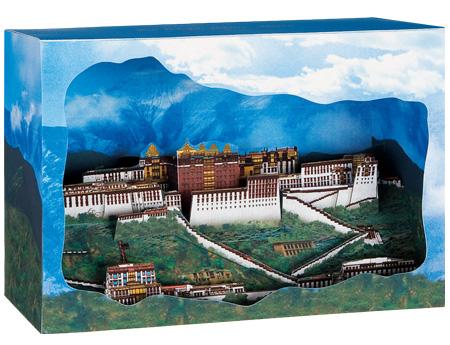Tatebanko is a forgotten Japanese art of creating amazing dioramas and scenic perspective from paper. Tatebanko was popular and widely admired from the Edo period ( 17th century ) to the early 20th century.
It is basically a technique of creating pictures and sceneries using layers of paper or similar material and adding depth to a 2 dimensional model.
For my model, I have employed the Tatebanko style to add depth to my model rather than making the traditional box model. These layers add to the sense of perspective, look lively and are a creative way of constructing a diorama.
Along with Kirigami, which I have mentioned in my previous posts, the idea is to create a unique style of model making and diorama construction, and create a demonstration of the same via a short motion animation trailer.
I would also be using cut out animation, invented and developed by Quirino Cristiani (July 2, 1896 – August 2, 1984) who was an Argentine animation director and cartoonist, responsible for the world's first two animated feature films as well as the first animated feature film with sound. He used cardboard cut outs to create animation and special effects for his film and my plan is to adapt that to the current trend of paper cut out a la Andersen Studio and film a short montage movie.
References:
http://www.tatebanko.com/about/index.html [Accessed 10th June 2011] [Online; Live]
http://wwww.quirinocristianimovie.com [Accessed 17th June 2011] [Online; Live]
Bendazzi, G., (Taraboletti-Segre, A., translator); Cartoons: One Hundred Years of Cinema Animation; Indiana University Press;(paperback reprint, 2001)
Somnia Evigilando
Dream by awakening!
27 June 2011
13 June 2011
8 June 2011
Kirigami - Building Designs
A kirigami model
Kirigami (japanese: kiru - to cut; gami - paper) is a variation of the Japanese art form Origami and involves cutting of folded paper to create different shapes. It is a good way to create free standing 3D models, frames, stencils and decorative items.
For my model, I am planning to use Kirigami models alongside the basic hard board layout to inculcate a more rough (intentional) and cut out kind of a feel. The kirigami models are easier to maneuver and bend as compared to a harder material model and thus will make filming much easier and give a more organic appeal to the model.
Kirigami (japanese: kiru - to cut; gami - paper) is a variation of the Japanese art form Origami and involves cutting of folded paper to create different shapes. It is a good way to create free standing 3D models, frames, stencils and decorative items.
For my model, I am planning to use Kirigami models alongside the basic hard board layout to inculcate a more rough (intentional) and cut out kind of a feel. The kirigami models are easier to maneuver and bend as compared to a harder material model and thus will make filming much easier and give a more organic appeal to the model.
1 June 2011
Current Practitioners - Steven Warne
Steven Warne is the animator for Wallace and Gromit and Tim Burton's Frankenweenie. Having been fascinated by inventing and controlling little worlds from the time he was a little child, he landed himself an internship with Aardman at the age of 15. When at Aardman, he learnt in depth, the scale and magnitude of animation production. Warne has a clear cut animation style and specialises in stop-motion. He believes that stop-motion has a bright future and thinks that it is a good way to show creativity. Following are his top films:
Street of Crocodiles (Brothers Quay)
Creature Comforts (Nick Park)
Stage Fright (Steve Box)
Hedgehog in the fog (Yuri Norstein)
Loves me…loves me not (Jeff Newitt)
Show Reel 2010
Stop-Motion Showreel // June 2010 from Steve Warne on Vimeo.
Additionally, his blog has other animation projects and the work he has been involved with can be viewed at http://tinylivingpeople.blogspot.com/
Treatment in Post Production
A SHORT LOVE STORY IN STOP MOTION from Carlos Lascano on Vimeo.
Reference: http://www.smashingmagazine.com/2008/12/31/50-incredible-stop-motion-videos/
Subscribe to:
Posts (Atom)









